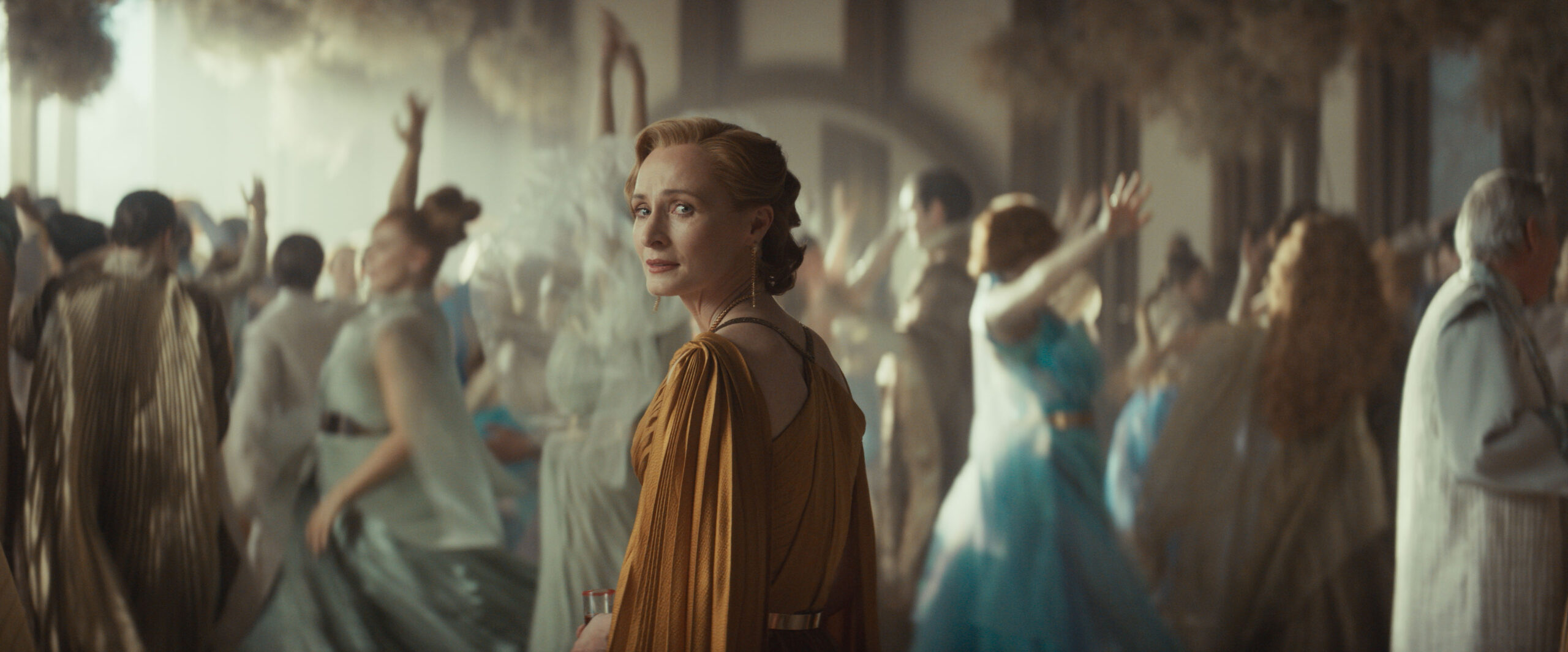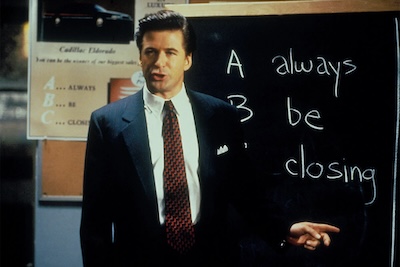Cinematographer Christophe Nuyens was responsible for creating the look of the first six episodes of Disney+ Andor season two. Nuyens’s ability to explore the different worlds that Cassian Andor (Diego Luna) inhabits allowed for a high degree of creative freedom. He was particularly able to contrast the way people inhabit this expansive universe. His lensing across the critical acclaimed second season captured complex human dynamics ranging from emotionally tragic to hiding your sorrows through dancing to the humor of having an overbearing mother over for dinner.
Here, in an interview with The Contending, Nuyens details his process to capture the brilliance of Andor season two.
The Contending: What was it like trying to capture the world of Star Wars?
Christophe Nuyens: I always found the Star Wars Universe to be very cinematic with its sets and costumes. As a DP, it’s a dream to work on a show like Andor because the plot is happening in so many different worlds from Yavin to Mina-Rau. All of those planets and all those worlds have their own look, so as a DP it’s really fun to play around with it.
The Contending: One thing that I’ve always loved about Andor is that it’s not just the backwater planets that we get to see. We get to see different levels of society in Star Wars. In episode six, “What a Festive Evening,” we get to see the wealthy elite at extravagant events that are like the Met Gala with paparazzi around. What was that like to capture?
Christophe Nuyens: It’s the same as the wedding sequence. They are more classy, and for me, it was really nice to have those scenes as a contrast to the scenes on Yavin and the gritty night scenes on Ghorman. It was really important that those scenes felt different and that they were chic and glamorous.
The Contending: I visited your site, and the scene that immediately pops up there is when Cassian has the TIE Fighter and it made me curious how you captured that. Because you have him in a humorous moment when the TIE Fighter goes in reverse accidentally and then we eventually get to the more epic fight sequence when he’s shooting at Stormtroopers. I wonder what the contrast was in shooting that?
Christophe Nuyens: It is a scene that a lot of prep went into because it’s shot in so many different bits with a gimbal, with a lot of different looks. The hangar that it takes place in was one big stage. We rehearsed everything beforehand with Diego because we needed to see how he was going to play it. We even watched previews of it with Diego where he was giving us suggestions about how it should look. Everything was pre-visualized and we just broke everything down into tiny details to start shooting it. Like lighting cues, colors, lasers; is it night, is it blue hour–we really went into the smallest details to make certain it was as good as possible.

The Contending: One of the biggest moments visually that I thought was episode three, “Harvest,” where you have so many memorable shots. We have Mon Mothma doing her intense dance scene, then we have Bix fighting off her attempted rapist within this enclosed space, really playing up the danger. Then you have Cassian Andor flying in on the TIE Fighter taking out Troopers, though it’s a more contained battle. So what was it like shooting that episode?
Christophe Nuyens: For us it was about timing. We already knew the song that Mon Mothma was going to be dancing to because for Tony (Gilroy) it was important that it was rhythmic and building up the tension to the end. So again it was something we shot, listed, and tested it out in little edits to make certain it was just right. With the fight sequence on Mina-Rau the difficulty with that scene was that we planted grain fields in the UK and we had a window of four weeks where the grain was the perfect height and color. But the day before we started shooting the set strike happened. So we lost half of our actors, but we did continue shooting with the actors we had in those fields. Then six months later we had two stages full of grain crops and we had to recreate a natural environment, which was really difficult. I hope people don’t notice it, but the end of the episode is such a mixed bag of shots in the real fields and shots in a stage. It was hard to keep it consistent at the end.
The other thing that was important for us was we wanted to tie those two scenes together. When Mon Mothma is dancing she is losing it, and you have the Sun going lower and lower at the wedding and it starts flaming out the image. Then you go to the TIE fighter as it is taking off and its intense light, and we cut inside and see everyone has just escaped. All of those moments were planned out to make certain they tied together.
The Contending: Looking at your filmography, I’ve seen that you’ve almost universally worked in television. Is there a reason that you’ve chosen that medium that you want to work in the most?
Christophe Nuyens: No, it’s where I started, and people like to put other people in boxes and I’ve just been in the box of television. But I think in the last five years the bridge between television and film has been closing and it is becoming almost the same. In fact some television shows have a higher quality on them than films. It is something that in my early days as a DP I was fighting against, because of course I wanted to do films and people were saying, oh, but you’re doing television. Now I am doing films, but I think that’s because the bridge between television and film is closing, and I think Andor is one of the best examples. If you put the first three episodes together or the fourth through sixth episodes together they are almost like a film. Andor is a great example of how to get between film and television.
The Contending: Was there anything from the first season of Andor that inspired you and how you shot the second season?
Christophe Nuyens: Of course I was inspired by the first season! It was beautiful, and it was important for me to do it as at least as good as what they did in the first season. The only thing I wanted to change was to try and move the look towards Rogue One. An example of that was in the first season it was shot on Panavision C lenses, which is a super 35 sensor, and I wanted to make the sensor bigger. So I went with two frame lenses and a bigger sensor which is closer to Rogue One, which was shot on an ALEXA 65, which is almost an IMAX. So the idea was just to enlarge the scope. Then of course we had different planets where I could start from scratch. For example, episodes four, five, and six on the planet Ghorman were actually the first block of episodes me and director Ariel Kleiman shot. So we got to create the whole look and atmosphere of Ghorman, which was really nice. But then there were things like the ISB sets that we kept the same because they looked great so we just tried to refine them, but that was the only thing we had to do.
The Contending: With everything that we’ve talked about, is there anything else that you found interesting in shooting Andor or a particular shot that really stood out for you?
Christophe Nuyens: For me, the end of episode three, which we talked about, I was really proud of. Besides that, I really love the constituency meeting on Ghorman where they have all those speeches. There is something about it. I love the set and the atmosphere and the grittiness–I loved shooting that. Then there’s a scene that has nothing to do with cinematography (though I did shoot it), it’s the scene with Dedra and Syril in their apartment with Syril’s mother. I still remember shooting that scene. The crew was so happy shooting that scene, because we were all laughing, and those three are such great actors, and we were all sitting at the side realizing we all know this dynamic of a mother reacting to her son in a relationship. That is what’s great about Andor: it’s so human.
Andor streams in full exclusively on Disney+.







![‘Pirates! The Penzance Musical’ Breakout Star Nicholas Barasch Discusses Performing On The Tonys With Seven Stitches On His Face [VIDEO]](https://thecontending.com/wp-content/uploads/2025/06/Pirates0011r-120x86.jpg)

